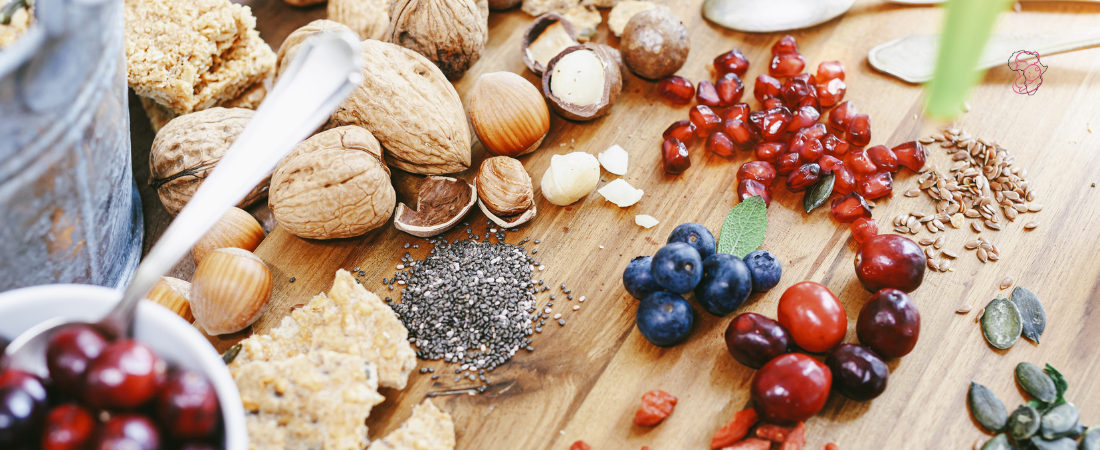
Top 10 Superfoods Every African Pregnant Woman Should Eat for a Healthy Pregnancy
- June 21, 2025
- 0 Likes
- 191 Views
- 0 Comments
Pregnancy is one of the most critical and transformative periods in a woman’s life. The maternal body undergoes vast physiological and metabolic changes to support the development of a healthy fetus. These changes increase the demand for specific nutrients essential for fetal growth, organ development, and maternal well-being. In the African context—where access to supplements may be limited—embracing nutrient-dense, culturally relevant foods is not just beneficial; it is vital.
Superfoods are those that are exceptionally high in essential vitamins, minerals, and antioxidants. Across Africa, many of these foods are readily available in local markets and traditional diets. By understanding their pathophysiological role, pregnant women, midwives, nutritionists, and healthcare workers can make informed choices to reduce risks such as anemia, birth defects, and preterm labor.
1. Dark Leafy Greens (Amaranth, Moringa, Spinach) Dark green vegetables are packed with folate, iron, calcium, and vitamin K. Folate is particularly crucial in the first trimester to prevent neural tube defects like spina bifida. Iron supports the production of hemoglobin for the mother and fetus, while calcium is needed for fetal bone and tooth development.
Pathophysiology: Folate aids in DNA synthesis, methylation, and red blood cell formation. A deficiency may lead to megaloblastic anemia and increase the risk of miscarriage or developmental abnormalities. Iron deficiency leads to anemia, reducing oxygen transport to the placenta.
🟢 Local Tip: Moringa powder, used in many African homes, can be sprinkled into soups or ugali.
2. Eggs Eggs are a powerhouse of complete proteins, choline, vitamin D, and essential fatty acids. These nutrients support brain development, muscle formation, and immune modulation.
Pathophysiology: Choline is necessary for neurogenesis and memory encoding in the fetal hippocampus. Vitamin D enhances calcium absorption, critical for skeletal development and immune regulation.
🥚 Local Use: In many rural communities, backyard poultry makes eggs accessible and cost-effective.
3. Greek Yogurt or Fermented Milk (Maziwa Mala, Laban) Fermented dairy products are rich in probiotics, calcium, and vitamins B2 and B12. These nutrients support bone density, reduce the risk of gestational hypertension, and enhance gastrointestinal function.
Pathophysiology: Probiotics improve gut microbiota, which helps prevent constipation and may reduce inflammation. A healthy microbiome is also associated with reduced incidence of gestational diabetes and preeclampsia.
🥛 Cultural Use: Consumed chilled or with ugali, mala is especially common in Kenya and Tanzania.
4. Legumes (Beans, Lentils, Groundnuts) Legumes are rich in folate, fiber, iron, and plant-based protein, making them ideal for supporting maternal blood volume expansion and fetal tissue development.
Pathophysiology: Fiber supports gastrointestinal motility and prevents pregnancy-related constipation. The folate in legumes aids in neural tube development, while plant proteins contribute to fetal cell growth.
🌱 Local Staple: Nigerian moi-moi (steamed bean pudding) and Ghanaian groundnut stew are classic examples.
5. Avocados Avocados are nutrient-dense fruits rich in monounsaturated fats, potassium, magnesium, and folate. They are also a source of fiber and antioxidants.
Pathophysiology: The healthy fats support the formation of the fetal brain and central nervous system. Potassium assists in fluid balance and blood pressure control, while magnesium reduces the risk of leg cramps and preeclampsia.
🥑 African Grown: Widely cultivated in Kenya, Ethiopia, and South Africa.
6. Sweet Potatoes Sweet potatoes are excellent sources of beta-carotene, which the body converts into vitamin A—essential for vision, immune function, and cellular differentiation.
Pathophysiology: Vitamin A supports the development of the heart, lungs, kidneys, and eyes. Deficiency may result in night blindness and impaired immunity in both mother and child.
🍠 Local Delight: In Uganda and Rwanda, boiled sweet potatoes are eaten daily.
7. Fatty Fish (Tilapia, Sardines, Catfish) These fish are abundant in omega-3 fatty acids (DHA and EPA), iodine, and vitamin D. They play a central role in fetal neural development and maternal cardiovascular health.
Pathophysiology: DHA is incorporated into fetal brain phospholipid membranes, improving visual acuity and cognitive development. Omega-3s also reduce inflammation and the risk of early labor.
🐟 Cultural Note: Smoked catfish is a delicacy in West African stews.
8. Berries (Mulberries, Wild Blueberries, Baobab Fruit) Though not always commercially farmed, native berries and fruits like baobab are rich in vitamin C, polyphenols, and fiber.
Pathophysiology: Vitamin C boosts iron absorption and strengthens the immune system. Polyphenols reduce oxidative stress, which is linked to pregnancy complications like gestational diabetes.
🍓 African Insight: Baobab powder, added to juice or porridge, is common in Sahel regions.
9. Nuts and Seeds (Groundnuts, Sesame, Pumpkin Seeds) Nuts and seeds offer zinc, magnesium, omega-6 fatty acids, and plant protein that promote immune function and fetal cell proliferation.
Pathophysiology: Zinc plays a key role in DNA synthesis and cellular repair. Magnesium regulates muscle and nerve function and may help prevent preterm contractions.
🥜 Local Snack: Sim-sim bars and groundnut paste are popular in Uganda and Nigeria.
10. Whole Grains (Millet, Sorghum, Brown Rice) Whole grains provide iron, B-complex vitamins, selenium, and complex carbohydrates for sustained energy and red blood cell production.
Pathophysiology: B vitamins, particularly B6 and B12, are involved in neurotransmitter synthesis and red blood cell maturation. Iron helps prevent anemia—a common pregnancy complication in Africa.
🌾 Cultural Foods: Fermented millet porridge (uji) is popular in East Africa; sorghum is widely used in Sudanese and Nigerian cuisines.
Conclusion
For African women, pregnancy nutrition should be both culturally grounded and scientifically informed. These ten superfoods not only nourish the mother and growing fetus but also align with traditional diets and agricultural patterns across the continent. Addressing common deficiencies like folate, iron, and vitamin A through diet can reduce maternal mortality, birth defects, and low birth weight.
Investing in food education, local farming, and maternal healthcare access will ensure healthier pregnancies across Africa. Healthcare providers, NGOs, and policymakers must collaborate to promote these locally available and nutritionally powerful foods.
References
- WHO. (2021). Nutrition for pregnant and lactating women. https://www.who.int/news-room/fact-sheets/detail/maternal-nutrition
- Bérard, A., Sheehy, O., Zhao, J. P., & Bernatsky, S. (2016). Prenatal exposure and child outcomes. British Journal of Nutrition, 116(7), 1172–1179. https://doi.org/10.1017/S0007114516002982
- Orgel, E., et al. (2016). Obesity, inflammation, and nutrition in child health. Journal of Clinical Nutrition, 104(6), 1529S–1534S. https://doi.org/10.3945/jn.115.224048
- Black, R. E., et al. (2013). Maternal and child undernutrition and overweight in low-income and middle-income countries. The Lancet, 382(9890), 427-451. https://doi.org/10.1016/S0140-6736(13)60937-X
- Allen, L. H. (2005). Multiple micronutrients in pregnancy and lactation: An overview. The American Journal of Clinical Nutrition, 81(5), 1206S–1212S. https://doi.org/10.1093/ajcn/81.5.1206S



Leave Your Comment